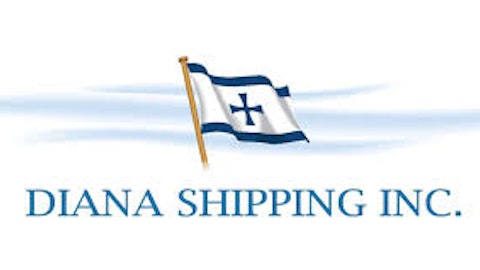I was saddened to hear that Paul Soros, a legend in the drybulk and shipping industry, passed away. Not only is the loss of such an innovative person a loss to the world, but worse is that Soros never got to see the industry that he once helped to engineer recover from its low point. Soros, the brother of famed investor George Soros, recently succumbed to several major sicknesses at the age of 87. Soros transformed the global shipping industry with his design of port facilities, helping trade and shipping companies to become more productive and efficient.
Shipping has seen better days, and unfortunately there aren’t any clear signs that recovery in this market is anywhere near. While sectors such as housing and autos have demonstrated sure signs of recovering from the effects of the economic recession, there are no such green shoots in the business of shipping. For instance, as DryShips Inc. (NASDAQ:DRYS), a pure-shipping company with a stake in drilling company Ocean Rig UDW Inc (NASDAQ:ORIG), points out in its annual report:
Charter hire rates for drybulk carriers are volatile and remain significantly below their highs of 2008, which has had and which may continue to have an adverse effect on our revenues, earnings, and profitability and our ability to comply with our loan covenants.
The company is basically warning that unless rates strengthen, its ability to service its debt will only get worse. That’s troubling. DryShips Inc. (NASDAQ:DRYS) is saddled with some $4.4 billion in debt, and it’s going to be a while before the company can consider returning value to shareholders.
The Baltic Dry Index, which is a benchmark for rates on key drybulk routes, peaked at nearly 11,800 in May 2008 and hasn’t seen the likes of those levels since. In March of this year, the index resided at about 843, as indicated in Dry Ships’ annual report.
Indeed, that 2008 year is key for companies that ship drybulk commodities, such as iron ore, coal and grains. It was in the years leading up to the financial crisis that a surplus of ships came on the market. Now, shippers are left with too much supply and less robust demand for commodities, which has been exacerbated by a tight financing environment for commodity trade.
Indeed, in the first quarter of 2013, Dry Ships revealed that it had sold four vessels, two of which went to an “unaffiliated third party” with the remaining vessels having gone to an entity known to George Economou, chief executive of DryShips Inc. (NASDAQ:DRYS). When pressed on a conference call, Mr. Economou denied to elaborate on the buyers of those vessels despite the fact that much of the industry is mired in the very same problems that Dry Ships itself is trying to overcome.
DryShips was left with a payment of $29 million, and the sale reduced capex by about $150 million. The company is still building six new vessels for delivery between this year and next. It only has time charters and financing secured for two of those vessels, according to the latest quarterly report.
The company reported a first quarter net loss of $116 million, or -$0.30 per share. DryShips Inc. (NASDAQ:DRYS) experienced a loss on the sale of its drybulk vessels, which widened its quarterly loss.
And therein lies the problem with shipping companies – they aren’t generating enough profits to manage their debts. A bankruptcy filing is already in the works for Excel Maritime, another industry player, and the fear is that this company will be the first of many to file.
Sold its soul
Not so fast, however. Even DryShips Inc. (NASDAQ:DRYS) seemingly has a bright spot. Ocean Rig UDW Inc (NASDAQ:ORIG), an ultra-deepwater offshore driller of oil and gas, operates independently but shares a CEO with DryShips, which has a majority equity stake in the drilling company. But DryShips Inc. (NASDAQ:DRYS) recently completed an equity offering where it sold 7.5 million of Ocean Rig’s shares, netting some $123.1 million. Ocean Rig has a contract backlog of nearly $5 billion for the next three years. This may be the way to play commodities.




